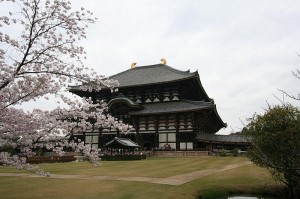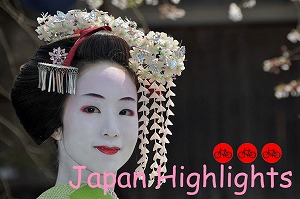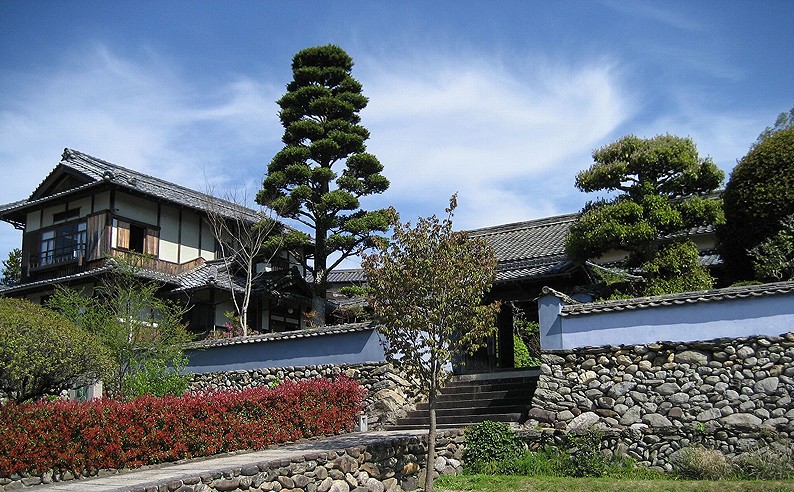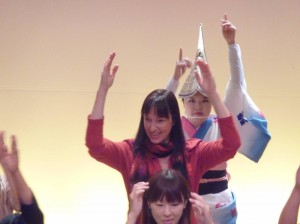A visit to Japan is pure indulgence for the senses, so come prepared to experience a rich history that dates back centuries and to soak up after a day of cycling in zenlike onsen spas; visit beautiful forests, mountains and sea coasts as well as futuristic architecture and transportation; sample delicious regional cuisine; meet polite and candid locals as well as lovers of Hello Kitty and karaoke.
Duration: 13 days / 14 nights.
Season: From 1 September til 31 May. Private guided tours upon request.
Calendar. If the tour is not scheduled or the dates in the calendar don’t suit your travel schedule, please contact us for a private or custom tour for you and your group.
Start: Hotel Toko in Izumi, Kagoshima, a 5 min walk from Izumi Station. You fly in/out via Kagoshima Airport or you arrive at/leave from Izumi Station by shinkansen.
End: Kyoto Heianbo Ryokan, a 5 min walk from JR Kyoto Station on JR Tokaido Shinkansen Line. From Osaka’s Kansai International Airport, take JR train “Haruka” (Ltd Exo) to JR Kyoto station (75 minutes). From Tokyo’s Narita Airport and Nagoya’s Centrair Airport, take JR Tokaido.
Level 3. There is four climbs of around 800m.
HIGHLIGHTS
- Soak in outdoor onsen hot springs
- Enjoy exquisite Japanese cuisine
- Hike around Mount Aso’s vulcano crater
- Visit the Hells in Beppu
- Stay in a temple on Mount Koya
- Feed the deer in Nara Park
- Cycle around temples, palaces and geisha quarters in Kyoto
ITINERARY
1: Welcome to Izumi !
You arrive in the course of the day at Hotel Toko. Please note that your room may not be available until check-in time at 3pm, however if you arrive early the hotel will keep your luggage secure if you want to do some exploration.
The Japan Highlights tour officially starts with a group meeting at 6pm followed by our first true Japanese meal. If you are arriving at the hotel later at night, please check yourselves in and note instructions about tomorrow’s meeting.
2 – 80 km: Izumi – Hinagu Onsen
After fitting the bikes, we explore Japan’s largest fortified samurai neighbourhood (麓) and set out amid citrus groves along the orange road to Minamata. Its harrowing museum dedicated to the victims of the Minamata disease merits a stop. As well as Mitachimisaki and Ashikita Beach. We enjoy the quiet Ashikita Natural Park, continuing along the Shiranui Sea and dancing a tango with the little railroad. Without noticing we arrive in Hinagu Onsen.
This hot spring dates approximately 600 years back. During the Edo era (17th-19 centuries), it was designated as a hot spring run by the Hosokawa domain of Kumamoto. This historic hot spring was even loved by the lord of the Yashiro Castle as well as the lord of Shimazu who temporarily resided in the area. From the Hinagu Onsen Jinja, a shrine where the god of the hot spring is enshrined, a sweeping view of the hot spring resort and the Shiranui Sea as well as the islands of Amakusa and Shimabara in the distance can be seen. Even today, there are many buildings here that continue to depict the days long past. Such as our ryokan from 1909 with its exquisite wooden interior.

3 – 59 km: Hinagu Onsen – Kumamoto
A leisurely ride on the fertile Yatsushiro plain, crossing the big rivers of Kyushu. The ruins of Yatsushiro Castle next to the elegant city museum designed by Toyo Ito. Rice paddies and igusa, the grass used to make tatami mats. Gradually the fields give way for the proud city of Kumamoto. We visit Kumamoto castle set amid fragrant ancient camphor trees. The castle dates back to 1467 and is considered one of Japan’s top 3 castles (三名城 Sanmeijō) together with Osaka and Nagoya. If we have time we’ll ride on to Suizenji garden and visit the replica of Mount Fuji.
4 – 69 km: Kumamoto – Aso
Have a hearty breakfast because today we will climb a vulcano. We slowly warm up through Kumamoto’s suburbs. After a break at Sogoundo Park we leave the city behind and join the banks of Shirakawa river. Mount Aso, the world’s largest caldera is looming ahead. We sneak through the break in the caldera and cross the impressive bridge at the confluence of Kurokawa and Shirakawa rivers. The rubble of old road beneath us testimonial of hydro power. Legend is that the outer crater was once a lake, but one day the god of the mountain kicked open the only break (through which rail and bus pass) emptying the water and leaving the plain fit for cultivation.
We slowly continue climbing and reach Jigoku onsen. The old forest road gets steeper only to ease off once we reach the main road leading up Nakadake Peak. Now it is 400 more altimeters to the top, the last 100 of which optionally by cable car. If the vulcano is not too active, we are allowed a peak across the rim into the bubbling cauldron of primordial soup.
Then the descent: we whoosh by the Vulcano Museum, Kusasenri grasslands and curious looking Komezuka Hill with great views on Aso plain and surrounding caldera rim. To arrive at our base camp for the night.
Aso No Tsukasa Villa Park Hotel
5 – 82 km: Aso – Yufuin
Today it is all ups and downs in the shadow of Kyushu’s highest mountain, Mt Kuju (1791m). But first we have to climb our way out of the Aso plain. On the rim of the caldera we look back to catch one last glimpse of the Aso plain.
We pass by several onsen towns: Kurokawa, Kinyu, Yunotsubo,… and join the historic Yamanami Highway. First foreign tourists to Japan arrived in Nagasaki and followed this classic road from Aso to Beppu. Picturesque Yufuin sits in the shadow of the majestic twin peaks of Yufu-dake. The rest of the day you can spend in the onsen, strolling main street or on a little ride to the lake.
6 – 26 km: Yufuin – Beppu
A short ride takes us around Mt. Yufu to Beppu, belching and basking in its bay. We visit the Bamboo Museum and Beppu’s 7 Hells.
We take a shot at the local hell-steamed cuisine (jigoku-mushi). All ingredients are steamed in special cauldrons over the natural fumes evaporating from the earth. Delicious !
7 – 45 km: Beppu – ferry to Yawatahama (Shikoku) – Uchiko
We hop on the ferry to Yawatahama on Shikoku island and cycle to Ozu with its magnificent castle. Shikoku Island is noted for 88-temple Pilgrimage, and here you can expect to see a number of ‘ohenro’ pilgrims in white clothing. The region is also well known for mandarin oranges.
Then Uchiko, a photographer’s dream. Part of the town is a typical small mountain town with shopping arcades and so on. But entire sections of it have been perfectly preserved as a living museum, where people still reside and where traditional crafts are still alive. The candle shop may be the only place where Japanese candles are still made using the traditional method.
We stay in an old merchant house once owned and renovated by Mr. Takahashi, Japan’s beer king. It is now run by 5 neighbourhood ladies.
8 – 62km: Uchiko to Matsuyama
We have breakfast in Mr. Takahashi’s living room and are sad to leave this gorgeous place. On the cycling menu today two 300m climbs before we reach the shores of the Seto Inland Sea. On the banks of Ishitegawa river we roll into Dogo Onsen, Japan’s oldest and most famous hot spring. It served as model for the main building in the movie Spirited Away. Legend says one day, an egret who injured his shin found a hot spring at Dogo. He soaked his shin every day in the hot water. Eventually the egret healed and flew away.
9 – 105 km: Matsuyama to Shikokuchuo
The following two days we will cross the whole of Shikoku Island. We head east out of Matsuyama city, still continuing on the Matsuyama Plain. Soon we start climbing up Hiwadatoge Pass (315 m). Then downhill along Nakayamagawa River towards Niihama on the north coast of Shikoku island. There is some heavy industry here, but the views on the Setonaikai Sea make more than up for that. Soon we hit the forests again and we slowly rise to 160m before a final downhill and the last 15 rural kms to Shikokuchuo.
10 – 115 km: Shikokuchuo to Tokushima
Today is the longest day, we ride another 115km eastward. From Shikokuchuo we climb away from the coast to 385m at Sakaimetoge Pass. On the downhill we join Yoshinogawa River that we follow all the way to Tokushima, famed for the Awa Odori dance festival in mid August. After dinner we enjoy the 8pm Awa Odori dance performance at the Awa Odori Kaikan Hall. You might want to end the day with a romantic stroll along the beautifully illuminated Shinmachigawa river.
Toyoko Inn Tokushima-eki Bizan-guchi
11 – 70 km: Tokushima – Koyasan (Honshu)
Ferry to sail across the Seto Inland Sea. The comfortable 2-hour ferry takes us to Wakayama on Honshu island. From the ferry terminal in Wakayama City we bike along Kinokawa river until we start the climb up Mt Koyasan. Upstream on Zakurogawa and Makunigawa rivers to Nashinokitoge Pass (503m). Then deeper into the Narukogawa valley to finally reach our sacred destination. Koyasan was founded 1,200 years ago by Kukai (aka Kobo Daishi) as the main temple of Shingon Buddhism. Must have been quite an expedition for Kukai san as well. We visit Kongobuji Temple, which is the main temple of the 3600 Shingon temples throughout Japan. At our temple stay at Ekouin you can glimpse the daily lives of Buddhist monks by participating in religious services and eating the traditional vegetarian food.
12 – 98 km: Koyasan – Nara
This morning you can take part in the Buddhist service before breakfast. On leaving our temple lodging we visit Okunoin, a cemetery and sacred area leading to Kobo Daishi’s mausoleum. The path is lined by hundreds of centuries-old towering cedar trees and over 200,000 gravestones and memorial pagodas.
Our cycling journey is a pleasurable downhill ride to join Kinokawa river again. Kinokawa soon changes names to Yoshinogawa river so we leave it to head north. We cycle through rich rice fields sided by lush green mountains. In Nara Todaiji temple is a must visit.
We spend the night in Aoba Chaya, nestled away in a quiet corner of Nara Park. When first noticed it has an almost fairytale air about it. And Maki san will make you feel at home immediately.
13 – 63 km: Nara – Kyoto
The river path winds through golden rice paddies on one side and green tea fields on the other side. This region is renowned for its matcha green tea. Following the bike path along the Katsura river, we are quickly approaching our final destination Kyoto. A last stop is Fushimiinari Shrine with the famous gallery of red torii gates. Then Kyoto Tower is beckoning us home. We lodge in its shadow in cosy Heianbo Ryokan. At night, we visit the colossal yet elegant Kyoto station.
14 – 45 km: Kyoto city tour
On our last cycling day we head out for a bike tour around Kyoto’s UNESCO World Heritage sites: Nishi Honganji, a guided visit to the Imperial Palace, the rock garden at Ryoanji, Golden Pavilion. But also Nishiki Market, Ippodo tea shop and Gion nightlife.
15 : Sayonara !
After breakfast you don’t have to climb in the saddle any longer. Now you are freed from the chores of the road.
Onwards…
– Further explore the imperial city of Kyoto and do some souvenir hunting.
– Head to Osaka or Tokyo for big city life.
Read Katy Piotrowski’s testimonial.
Read the tour report by Benny Van Bruwaene.




